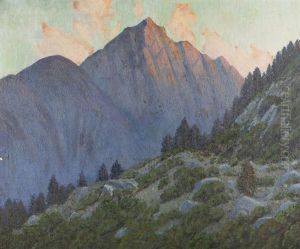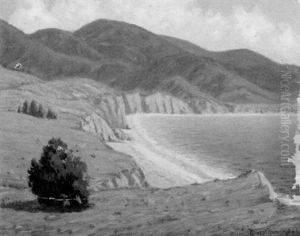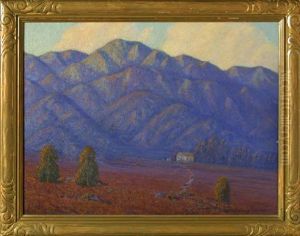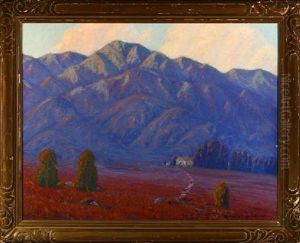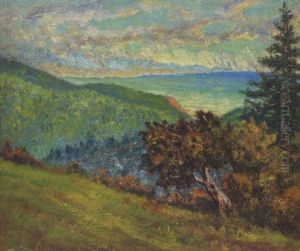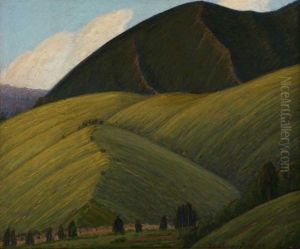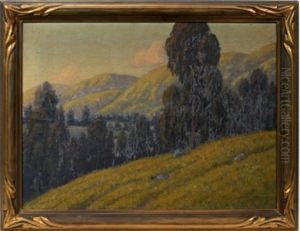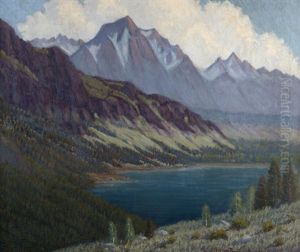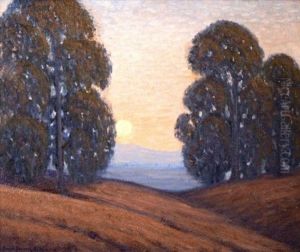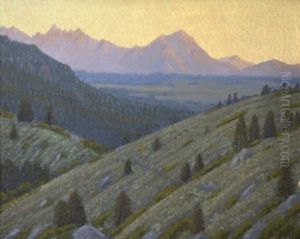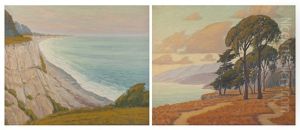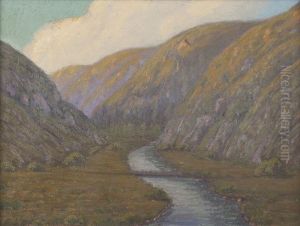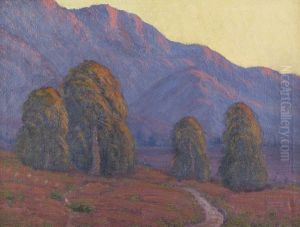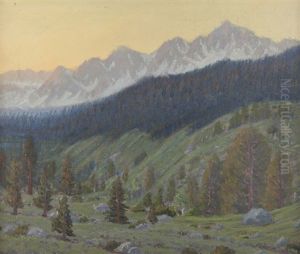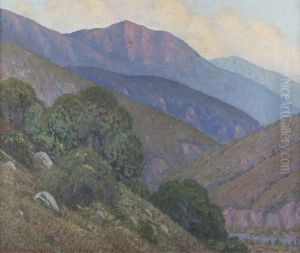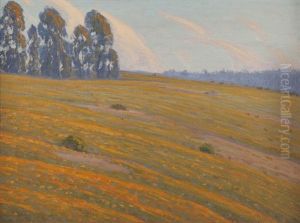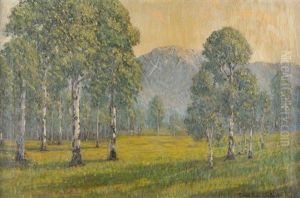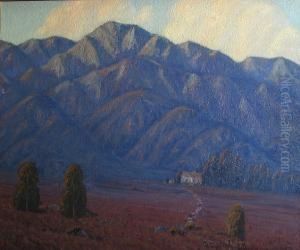Ernest Browning Smith Paintings
Ernest Browning Smith was an American artist whose contributions to art, especially in the realm of landscape painting, have been acknowledged for their distinctive style and technique. Born on August 18, 1866, in Chicago, Illinois, Smith developed an early interest in art, which was nurtured through his education and experiences. He embarked on his artistic journey at a time when the American art scene was undergoing significant transformations, with movements like Impressionism beginning to take hold.
Smith's career was marked by his dedication to capturing the essence of the American landscape, which he did with a particular focus on the Californian terrain. After moving to California in the early 20th century, he became an integral part of the state's burgeoning art community, contributing to its development through both his work and his involvement in various art organizations. His paintings are characterized by a keen observation of natural light and a delicate treatment of color, elements that combined to create serene and harmonious landscapes that resonated with the aesthetic sensibilities of his time.
Throughout his career, Ernest Browning Smith exhibited his work extensively, earning recognition and accolades for his artistic achievements. He was associated with several art institutions and groups, including the California Art Club, which played a pivotal role in promoting plein air painting and the appreciation of the Californian landscape. Smith's legacy is preserved through his contributions to American art, particularly in the context of the early 20th-century art movements that sought to capture the unique beauty of the American environment. He passed away on April 8, 1951, in Los Angeles, California, leaving behind a body of work that continues to be admired for its beauty, technical skill, and historical significance.
